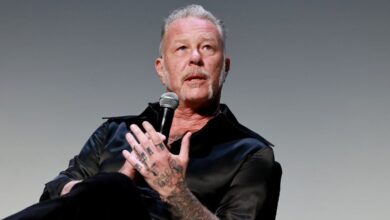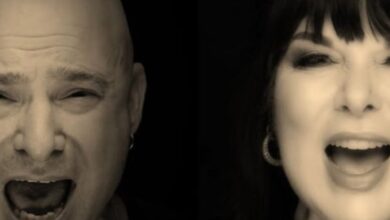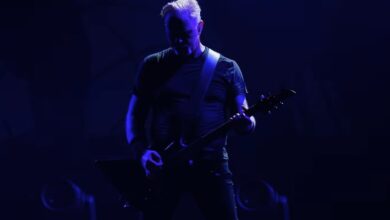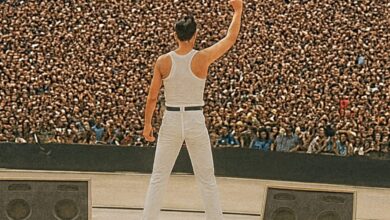Prince’s Super Bowl Halftime Show: The Night He Commanded the Rain and Made History
When Prince walked onto the stage at Dolphin Stadium on February 4, 2007, he wasn’t just facing the largest audience in American entertainment—he was stepping into a storm that refused to let up. It was the first Super Bowl played under relentless rain, the field glistening like a pool of glass beneath the lights. Moments before kickoff, an exchange backstage became legend: when told the weather was worsening, Prince smirked and said, “Can you make it rain harder?” That defiance, so uniquely his, would transform chaos into art and fear into fire.
The night’s football game—Colts versus Bears—was quickly forgotten once halftime began. Over seventy thousand soaked fans filled the stands, turning their ponchos into a sea of movement. On the field, a glowing stage shaped like Prince’s “love symbol” was pieced together, slick with rain and light. It looked treacherous, even impossible to perform on. Yet for Prince, the danger wasn’t deterrent—it was opportunity. He didn’t fight the storm; he invited it to dance with him.
Behind the scenes, hundreds of hands worked at impossible speed. Seventeen massive stage sections locked together in minutes, rain hammering down as producers whispered silent prayers. The entire broadcast was live—no cuts, no retakes, no safety net. Equipment sparked, cameras slipped, and tension hung thick in the humid Florida air. But when the lights rose and the first notes rang out, every drop of anxiety vanished. Perfection, somehow, had found its place in the storm.
Prince emerged from beneath the stage in a flash of turquoise and orange, the colors slicing through the gray sky like lightning. Without hesitation, he tore into “Let’s Go Crazy.” His guitar screamed, echoing across the soaked stadium. The crowd roared in kind, the sound merging with rain and thunder. Each step across the slick floor was a dare to gravity; each riff, a reminder that no element—not even the sky—could silence him. He didn’t perform around the rain; he performed with it.
He launched into “Baby I’m a Star” and “1999,” joined by the Florida A&M Marching 100, their brass section gleaming through the downpour. The field became a blur of motion and color—orange, gold, and deep purple illuminated by floodlights. The music bounced off the raindrops like fireworks, every note made sharper by the water cascading from the stage. What could have drowned any other performance instead amplified his. The storm didn’t interrupt the groove; it became the groove itself.
Then, with seamless mastery, he pivoted into Creedence Clearwater Revival’s “Proud Mary,” fusing swamp rock with electric soul before shifting into Bob Dylan’s “All Along the Watchtower.” Each song bent to his will, reshaped by his distinctive rhythm and phrasing. The transitions were fluid, the energy unbroken. It wasn’t a medley—it was a statement, one legend channeling others. His guitar didn’t just fill the space; it rewrote the meaning of tribute, stitching together decades of musical history in real time.
And then came a shock no one expected: Prince dove into Foo Fighters’ “Best of You.” On paper, it made no sense—a funk icon interpreting a modern rock anthem. But as his voice soared through the humid air, the song morphed into a gospel exorcism. The refrain “Is someone getting the best of you?” felt like both confession and challenge, echoing through the drenched stadium. It was pure Prince—fearless, unpredictable, and transcendent. What began as a halftime show was fast becoming myth.
The rain intensified until it seemed choreographed. Droplets sparkled under the floodlights, reflecting off the glassy stage as though heaven itself had joined the performance. The Twinz danced beside him in perfect unison, their movements synchronized with the storm’s rhythm. Prince glided across the slick floor as if immune to friction, his confidence radiating through every motion. The downpour no longer felt accidental; it was divine direction, turning danger into spectacle and spectacle into scripture.
Behind the scenes, the production crew was in controlled chaos. Water mixed with cables, sparks threatened equipment, and lenses fogged over mid-shot. In the control truck, producers watched in disbelief as everything held together. What viewers saw as effortless grace was a miracle of timing and trust. Prince commanded not just the stage but the storm, bending both technology and nature to his rhythm. Every frame broadcast that night carried the pulse of something unrepeatable.
Then the moment of eternity arrived. A translucent sheet rose behind him, casting his silhouette larger than life. The first chords of “Purple Rain” shimmered through the storm as violet light bathed the field. The rain fell harder, turning each drop into a gem of color. Prince lifted his guitar toward the sky, playing as though summoning thunder. The words “Purple Rain” echoed like prophecy. In that instant, it was no longer performance—it was communion.
Inside the broadcast control room, operators maneuvered cameras through mist, their hands slick and trembling. Lightning flashed, synchronizing perfectly with the beat, as if nature itself were part of the band. Each shot looked cinematic, each second choreographed by chance and destiny. The broadcast never faltered. What should have been chaos instead became visual poetry—proof that when genius meets risk, even a storm obeys the rhythm.
For the NFL, it was a revelation. Years of cautious halftime bookings were shattered by one twelve-minute sermon of sound and storm. Prince blurred genres, generations, and expectations, reminding the world that live television could still feel alive. The league wanted safe spectacle; what they got was transcendence. In bending the rules, he reset the standard. Every artist to follow would be measured against that night in the rain.
Over ninety million people watched, and critics instantly crowned it among the greatest performances ever televised. Even now, it remains the gold standard. No lasers, pyrotechnics, or drones have eclipsed that sight—a man in turquoise, standing beneath the deluge, commanding sound and sky alike. The magic wasn’t in the technology; it was in the truth. Prince didn’t perform for applause; he performed for the moment itself.
Each revisit reignites its power. The lightning, the silhouette, the drenched audience frozen in reverence—it all feels alive again. It endures because it wasn’t planned perfection but divine improvisation. Prince didn’t fear the storm; he made it his stage partner. When he asked, “Can you make it rain harder?” it wasn’t arrogance—it was an invocation. That night proved that sometimes greatness doesn’t wait for clear skies; it’s born in the downpour.
@80sdeennice Prince sings “Purple Rain” (in the rain) in the greatest Super Bowl halftime show of all time 💜 ☔️ When the producers approached Prince before the set to warn him about the rain, he responded, “Can you make it rain harder?” #GOAT #SuperBowlXLI #2007 #prince #80sicon #80s #genx #80smusic #ilovethe80s #80skid #halftimeshow #purplerain #foryoupage ♬ original sound – 80s Deennice





